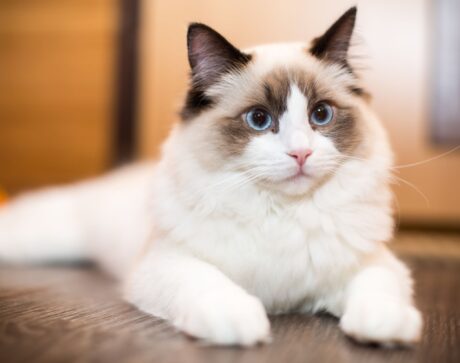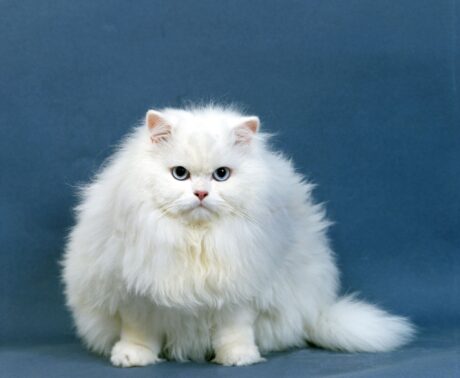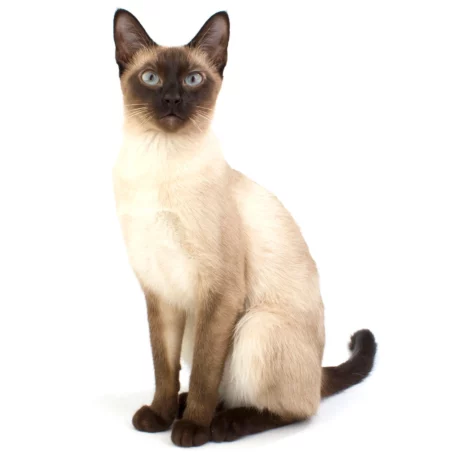Purebred cats are not as commonly encountered outside of professional show rings or breeding circles as compared to their canine counterparts. This is largely because, unlike with dogs, many individuals do not place as much emphasis or value on a cat’s specific breed. Cats, irrespective of their breed, are often cherished for their unique personalities and behaviors, rather than their breed’s characteristic traits.
However, if you are specifically interested in acquiring a purebred cat, the breed lineage can offer useful insights into the potential characteristics and behaviors of a kitten as it grows into adulthood. Each breed has its own set of typical physical characteristics, temperaments, and potential health considerations. These traits are determined by generations of selective breeding to maintain or enhance specific breed qualities.
For instance, Siamese cats are known for their striking blue eyes, distinctive coat patterns, and vocal nature, while Maine Coons are renowned for their large size, tufted ears, and friendly demeanor. Understanding these breed-specific traits can guide your expectations and preparations for a new feline companion, ensuring you’re well-equipped to provide a suitable home and care for your purebred kitten as they mature.
For example:

Ragdolls.
Origin and History of the Ragdoll Cat
The Ragdoll cat, with its striking appearance and friendly demeanor, has steadily gained popularity and recognition in the world of feline enthusiasts. However, to truly appreciate the Ragdoll cat, one needs to delve into its unique origins and early breeding history.
The Ragdoll breed was developed in the 1960s in Riverside, California, by a breeder named Ann Baker. The breed’s foundation cat was a non-pedigreed white Angora-like female named Josephine. Reportedly, Josephine produced beautiful and even-tempered kittens, and when she was injured in an accident and taken to a local university for treatment, it was said that subsequent litters were even more docile and relaxed after her return.
Baker, intrigued by the kittens’ characteristics, decided to create a breed that would consistently exhibit these desirable traits. She selectively bred Josephine’s offspring, choosing cats that embodied the qualities she sought — a docile demeanor, striking appearance, and tendency to go limp when picked up (a characteristic that inspired the breed’s name).
In a move unusual for cat breeders at the time, Baker decided to trademark the name “Ragdoll” and set up her own registry, the International Ragdoll Cat Association (IRCA), in 1971. Baker maintained tight control over the development of the breed, implementing strict standards for the cats and charging franchise fees to anyone who wished to breed or sell cats under the Ragdoll name.
While the IRCA Ragdolls were only bred within Baker’s circle, a group of breeders eventually branched off in the 1970s, seeking to standardize the breed and gain recognition from established cat breed organizations. They formed the Ragdoll Fanciers Club International (RFCI), which followed more traditional breeding and registration practices.
Their efforts were successful, and over time the Ragdoll was recognized by major cat registries. The Cat Fanciers’ Association (CFA) began registering the breed in 1993 and granted it full championship status in 2000.
Today, the Ragdoll cat is beloved by many for its striking blue eyes, semi-longhair coat with color points, and notably affectionate and relaxed nature. They are now one of the most popular cat breeds, particularly in the United States and United Kingdom. Yet, even as they continue to win over hearts around the world, the Ragdoll’s unique origin story adds to the mystique and appeal of this charming breed.

Persians.
The Persian cat, with its luxurious coat and unique facial features, has been admired and cherished by cat lovers for centuries. To truly appreciate the allure of the Persian cat, it’s beneficial to explore its distinctive origins and history of breeding.
Persian cats, also known as Persian Longhairs, are one of the oldest and most recognized cat breeds in the world. Their history dates back to the 1600s, where they were first referenced in the writings of Italian traveler Pietro Della Valle during his journeys through Persia (modern-day Iran). Della Valle was taken by the elegant long-haired cats he encountered in the region, and he decided to bring them back to Europe.
In the centuries that followed, these exotic long-haired cats quickly became a symbol of elegance and nobility in European societies. However, it wasn’t until the late 19th century that Persian cats were shaped into the breed we recognize today.
In Britain, breeders began selectively breeding Persian cats to enhance their specific traits, such as their long coats and round heads. This selective breeding, while accentuating their unique features, also led to a divergence from the more traditional ‘doll-faced’ Persians to a breed with a more extreme ‘peke-faced’ appearance, characterized by a flat face and nose.
Meanwhile, Persians were also exported to America in the late 19th century. Here, their popularity soared, and American breeders too began efforts to further refine the breed’s characteristics. Like their British counterparts, American breeders favored the peke-faced variety, and it is this version that most people recognize as the Persian cat today.
The Cat Fanciers’ Association (CFA), founded in 1906, recognized Persians as one of its first breeds. In fact, a Persian cat was one of the first cats to win the title of Best in Show at a major cat show, the Crystal Palace Cat Show in 1871.
Today, Persian cats remain one of the most beloved and popular cat breeds worldwide. They are widely recognized for their luxurious long fur, broad face, and gentle demeanor. Despite changes over centuries, their breed’s history only adds to the charm and allure of these feline companions, solidifying their status as one of the world’s most admired and cherished cat breeds.
American shorthairs. This very common breed tends to be smart, playful, and good with children. They enjoy learning and are one of the few breeds that will readily do tricks to please their owners.
 white devon rex cat. isolated on dark background
white devon rex cat. isolated on dark backgroundDevon rex
The Devon Rex, with its elf-like features and playful personality, has captured the hearts of many cat lovers. Understanding the unique origins and breeding history of the Devon Rex provides a deeper appreciation for this remarkable breed.
The Devon Rex’s story began in the UK, in Devonshire, in the late 1950s. A stray cat with a curly coat had a litter of kittens, and among them was a unique male kitten named Kirlee, whose coat shared the same curly texture. Kirlee’s unique appearance caught the attention of a local cat fancier, Beryl Cox, who took him in and named him.
At around the same time, another breed of curly-coated cats, the Cornish Rex, was being developed in the neighboring county of Cornwall. Initially, it was believed that the Devon Rex and Cornish Rex shared the same genetic mutation. However, after breeding Kirlee with a Cornish Rex, it was soon discovered that they had distinct genetic mutations. This meant that the Devon Rex was indeed a breed in its own right, with a mutation unique to itself.
In the early 1960s, cat breeders started selectively breeding Devon Rex cats to refine and standardize their distinct features. What made the Devon Rex particularly stand out was its short, soft, and curly coat, its large ears, and its slightly upturned nose — characteristics that give it its impish look.
Devon Rex cats quickly gained popularity, with the breed first being recognized in the UK by the Governing Council of the Cat Fancy (GCCF) in 1967. Across the pond, the Cat Fanciers’ Association (CFA) recognized the Devon Rex breed in 1979, with the breed granted championship status in 1983.
Today, the Devon Rex is adored by many for its unique features, playful personality, and loyal nature. Despite their relatively recent history, Devon Rex cats have left an indelible mark on the feline world, charming cat lovers with their distinctive looks and endearing antics.

Siamese
The Siamese cat, with its striking blue eyes, sleek body, and unique color points, is one of the most recognizable and celebrated cat breeds worldwide. Delving into the origins and breeding history of the Siamese cat offers an engaging journey through centuries of feline lore.
Siamese cats are one of the oldest and most famous cat breeds. Originating from Thailand, then known as Siam, Siamese cats were considered sacred and were kept by Buddhist monks for centuries. Their early history is steeped in mystery and folklore. One of the earliest known records of the breed is in the “Tamra Maew” or “The Cat-Book Poems,” a manuscript dating back to the 14th to 18th centuries, which features illustrations of cats resembling the modern-day Siamese.
Siamese cats were introduced to the Western world in the late 19th century. The first documented Siamese to reach the shores of the United States was a female cat named Siam, who was gifted to the wife of President Rutherford B. Hayes in 1878. In the UK, the breed was first exhibited at the Crystal Palace Cat Show in London in 1871.
The Siamese quickly gained popularity due to their distinctive color points, slender bodies, and strikingly blue almond-shaped eyes. The breed played a significant role in the development of other breeds, including the Balinese, Oriental, and Himalayan cats, all of which have Siamese ancestry.
However, the breed also underwent changes over time due to selective breeding. Early Siamese cats had a more moderate body type, but breeders in the mid-20th century started favoring a more elongated and slender look, leading to the development of two types: the traditional, or “apple-headed” Siamese, and the modern, or “wedge-headed” Siamese.
Major cat registries like the Cat Fanciers’ Association (CFA) and The International Cat Association (TICA) recognize both types, although the modern type is more common in cat shows.
Today, the Siamese cat remains one of the most popular and loved breeds worldwide. Known for their vocal nature, intelligence, and sociability, Siamese cats continue to charm people with their unique looks and engaging personalities. Their deep-rooted history only adds to the allure of this breed, cementing its place in the pantheon of cherished cat breeds.
